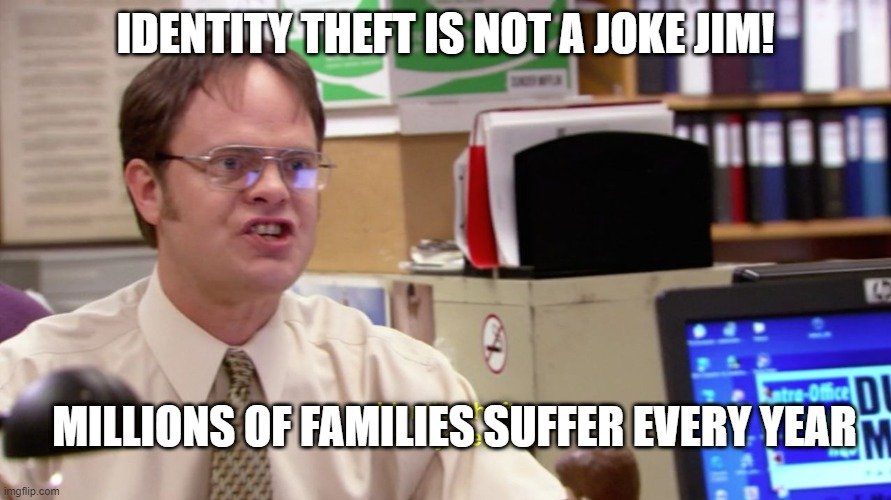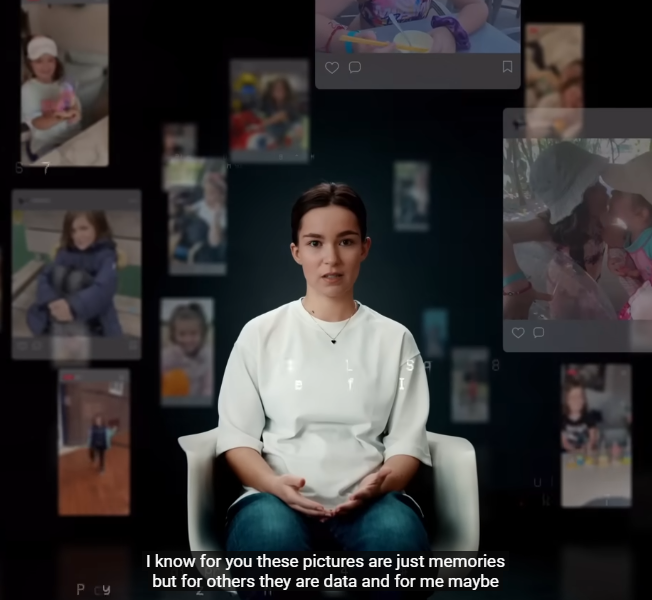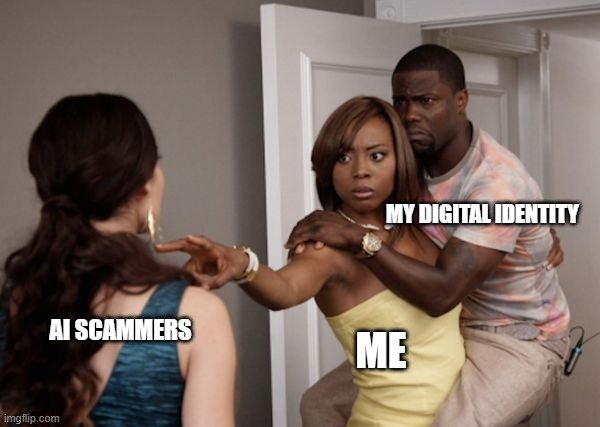Every day, we share small parts of ourselves online. A quick voice note to a friend. A short video on social media. A photo with family or colleagues. These moments feel normal and harmless.
But artificial intelligence is changing how these moments can be used. With only a few seconds of audio or a few photos, AI can now create a version of you that looks and sounds very real. It can copy the way you speak, the way you smile, and even the way you move. This digital copy is called an AI doppelganger.
This is no longer an idea from science fiction. It is already here. Around the world, people are being tricked by voices and videos that appear genuine but are not. Parents are answering phone calls that seem to be from their children. Employees are joining video meetings with leaders who are not really there. In some cases, people and businesses have lost large amounts of money due to AI scams.
In this article, we will look at how AI doppelgangers are created, the deepfake risks they pose, and what you can do to protect your identity in the rising AI era.
What is an AI Doppelganger?
An AI doppelganger is a digital copy of a person created with artificial intelligence. Unlike a simple edited photo or video, it can look, sound, and even behave like the real person. In many cases, these avatars can be so realistic that they become powerful tools for AI identity theft, tricking even the most cautious individuals.

These copies are built from the traces we leave online. A few seconds of audio can be enough to clone a voice. A handful of photos can be stitched into a moving, speaking video.
Some tools only need 3 seconds of audio to build a voice model with more than 85% accuracy. Others can turn just a few photos into lifelike videos that talk and move. These tools are no longer hidden in research labs. They are public, easy to use, and a fake video can be produced for as little as $300 per minute.
The risk is growing quickly. A report by Sensity AI found that more than 90% of deepfakes are linked to scams, harassment, or false information. Deepfake fraud attempts are rising each year, and some businesses have reported losing up to ten percent of their annual profits due to these attacks.
What makes an AI doppelganger especially concerning is that it can be created without the person’s knowledge or consent. As technology improves, it becomes increasingly difficult to distinguish between what is real and what is fake.
Real-World Cases
AI doppelgangers are already being used in ways that affect both ordinary people and trusted organizations. Families are being targeted through emotional scams, while businesses face sophisticated attacks that can cost millions.

Here are cases that show how easily identity can be copied and manipulated, leading to severe financial, emotional, and reputational harm.
Voice Scammed by a Mother’s Cry
In Florida, a mother received a phone call that left her frozen in fear. On the line was the voice of her daughter, crying and panicked, saying she had been in a car accident. The caller claimed she had injured someone and needed bail money right away.
Terrified, the mother sent $15,000 without hesitation, convinced her daughter’s safety depended on it. A second call came soon after, demanding more money and claiming that a baby involved in the accident had died.
Only later, when she finally reached her real daughter, did she realize the truth. The entire call had been an AI scam. The voice she heard was not her daughter at all, but an AI-generated clone designed to sound exactly like her.
The family was shaken but decided to take action. They created a private code word to confirm emergencies in the future and shared their story publicly to warn others about how real and personal these scams can feel.
25 Million Lost in CEO Deepfake Video Call
In Hong Kong, a finance worker at a large company joined what seemed like a routine video call. On the screen were familiar faces, senior executives from the company. They spoke with confidence and gave clear instructions to transfer $25 million to a third-party account for a confidential deal.
Nothing felt unusual. The faces and voices matched perfectly. The worker trusted what they saw and followed the instructions.
But the meeting was fake. Criminals had used AI digital avatars to create lifelike video and audio copies of the company’s leaders. The entire call was a deepfake designed to trick the employee.
By the time the truth came out, the money was gone. The case shocked the corporate world and proved how easily AI doppelgangers can slip into everyday business, even fooling trained professionals in secure environments.
Scams Through Deepfake Ads in India
In Kerala, India, thousands of social media users came across fake videos that used the faces and voices of well-known public figures. These deepfake ads showed CEOs, actors, and influencers appearing to promote quick-return investment schemes. The videos looked like real interviews or endorsements and spread widely on Facebook, Instagram, and YouTube.
Local authorities reported more than 1,000 such videos online. Many people trusted the familiar faces and lost money after signing up. Some victims even invested their life savings, believing the platforms were genuine.
The cybercrime team worked to remove the videos, but new ones kept appearing. The sheer number and speed of these scams showed how deepfakes can quickly create trust and deceive people on a massive scale.
Deepfake Zoom Call Targets Crypto Firm
At a cryptocurrency company in Asia, employees joined what seemed like a regular Zoom meeting with senior leadership. The faces on the screen were familiar. The voices matched their executives. Everything felt routine until it was not.
The entire meeting was fake. Criminals had used AI-generated video and audio to impersonate the company’s top leaders. During the call, a link was shared through Telegram, and employees were tricked into installing malware on their devices.
This attack showed that AI doppelgangers are not only used for personal scams but can also be part of large, targeted operations against businesses. It was a clear example of how trust inside an organization can be turned into a weapon when technology makes the fake look real.
Why This Threat Feels Real Now
Making a fake voice or video has become very easy. With only a phone and an internet connection, people can access tools that create believable deepfakes. Many of these tools are free or inexpensive, which means they are available to almost anyone.
The reach of this issue is already clear. Between February 2023 and February 2024, nearly 43% of people came across deepfake content. That means almost half of internet users have encountered something fake that looked or sounded real.

The effects go beyond financial loss. People are being impersonated, families are receiving false messages, and even job interviews have been staged with fake videos. Each of these moments shakes confidence in everyday life and makes it harder to trust what we see and hear.
This is a present-day challenge. It is spreading across social spaces, workplaces, and homes, affecting people from students to professionals in ways that feel personal, confusing, and sometimes harmful.
How to Protect Your Identity
Living in a world where your digital self can be copied may feel overwhelming, but safety begins with simple habits. These steps can make a real difference in protecting your identity:
- Limit what you share: Post fewer voice notes, videos, and photos on open platforms. The less material available, the harder it is to build a copy of you.
- Tighten privacy settings: Lock down your social media profiles and control who has access to your content.
- Verify unusual messages: If a call or text feels out of place, pause and double-check before responding, even if the voice or photo looks familiar.
- Learn the signs of fakes: Watch for clues such as awkward pauses, mismatched lip sync, or unnatural movement in videos.
- Use multi-factor authentication: Protect email, banking, and social accounts with codes or authentication apps.
- Support stronger online rules: Stay updated on new laws and encourage policies that protect digital identity and regulate the misuse of AI.

The Future of Digital Identity
The next stage of digital identity will be shaped by both risk and protection. On one side, AI is becoming more advanced and easier to use, giving criminals stronger tools for impersonation. On the other hand, new defenses are emerging, from detection systems that spot deepfakes to digital watermarks that prove authenticity.
Governments are beginning to respond as well. Countries such as the United States, the United Kingdom, and Australia are drafting laws that focus on AI fraud and online impersonation. These early steps show that protecting identity will be a shared effort between technology, policy, and people.
Education will remain the most important safeguard. When people understand how these scams work and know the warning signs, they are less likely to be tricked. Building digital awareness will become as essential as learning to use email or social media.
In the near future, protecting your identity online will feel like a normal part of daily life. Just as antivirus software became standard for computers, identity protection will become standard for people.
Conclusion
The rise of AI doppelgangers is a reminder that our digital lives need the same care and protection as our physical ones. The real challenge ahead is not only the technology itself but how prepared we are to face it.
Awareness and small habits, from stronger privacy settings to verifying suspicious messages, can make a real difference. Just as antivirus software became a basic layer of defense for computers, protecting identity will become a basic layer of defense for people.
The key is staying alert, sharing knowledge, and supporting efforts that build trust in a digital world. By doing so, we shape a future where technology serves us without taking away who we are.
This article was contributed to the Scribe of AI blog by Aakash R.
At Scribe of AI, we spend day in and day out creating content to push traffic to your AI company’s website and educate your audience on all things AI. This is a space for our writers to have a little creative freedom and show-off their personalities. If you would like to see what we do during our 9 to 5, please check out our services.
